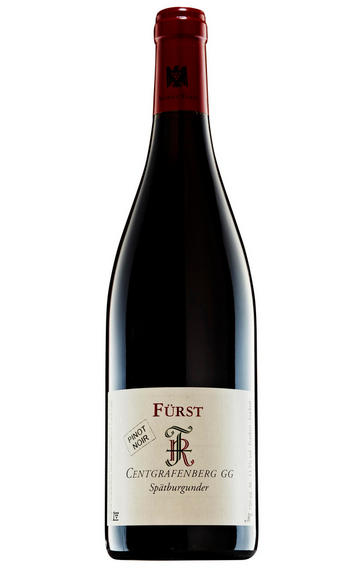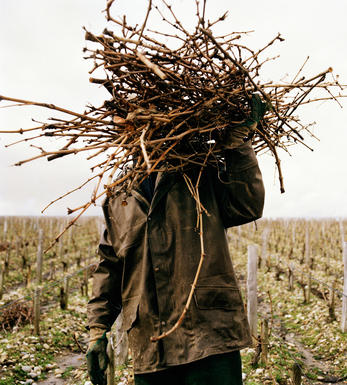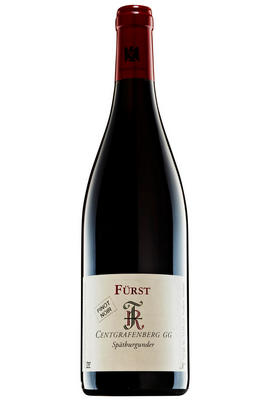
Critics reviews
jancisrobnson.com - October 2013
About this WINE

Weingut Rudolf Furst
In the westernmost corner of the Franconian wine region, framed by the low mountain ranges of Spessart and Odenwald, the Fürst family has been making wine since 1638. In 1979 Paul and Monika Fürst built the new estate amidst the vineyards and in 2007 they were joined by their son Sebastian.
Facing due south and overlooking the picturesque towns of Miltenberg and Bürgstadt the slopes of the Centgrafenberg are home to most of the vines. Pinot Noir and Riesling thrive in the warm and iron rich soils formed by the weathering of red sandstone. The quality of the wines is founded on minimal intervention in the vineyards, reduced yields, gentle vinification and long barrel ageing (12-20 months). Red wines are bottled unfiltered.
Pinot Noir has been cultivated on the hot red sandstone of Centgrafenberg, Hundsrück and Schlossberg for centuries. Frühburgunder (also known as Pinot Madeleine) is an old variety, indigenous to this region, which yields full bodied wines and has attracted more and more attention over the last years. Spätburgunder (Pinot Noir) is complemented by other classic Franconian wines (all dry) from Riesling, Weißburgunder (Pinot Blanc), and Silvaner. White wines are pressed gently, fermented and aged in both barrels and stainless steel tanks for 6 – 12 months.
“Rudolf Fürst is an acknowledged Pinot magician in Germany, not just with Spätburgunder (Pinot Noir) but also the earlier-ripening Frühburgunder.” Jancis Robinson MW, The Financial Times,13th November 2011.
“18 ha estate in Bürgstadt where some of the best Franconian wines are produce, especially the burgundy style Spätburgunders (rightly regarded as the finest in Germany).” Hugh Johnson, Wineguide 2012

Pinot Noir
Pinot Noir is probably the most frustrating, and at times infuriating, wine grape in the world. However when it is successful, it can produce some of the most sublime wines known to man. This thin-skinned grape which grows in small, tight bunches performs well on well-drained, deepish limestone based subsoils as are found on Burgundy's Côte d'Or.
Pinot Noir is more susceptible than other varieties to over cropping - concentration and varietal character disappear rapidly if yields are excessive and yields as little as 25hl/ha are the norm for some climats of the Côte d`Or.
Because of the thinness of the skins, Pinot Noir wines are lighter in colour, body and tannins. However the best wines have grip, complexity and an intensity of fruit seldom found in wine from other grapes. Young Pinot Noir can smell almost sweet, redolent with freshly crushed raspberries, cherries and redcurrants. When mature, the best wines develop a sensuous, silky mouth feel with the fruit flavours deepening and gamey "sous-bois" nuances emerging.
The best examples are still found in Burgundy, although Pinot Noir`s key role in Champagne should not be forgotten. It is grown throughout the world with notable success in the Carneros and Russian River Valley districts of California, and the Martinborough and Central Otago regions of New Zealand.



Buying options
Add to wishlist
Description
This is a touch deeper than Centgrafenberg but still pale and delicate. Fuller fruit flavours are found here with perfumed, almost clinical precision. This has the fleshy characters you want, but with a delicacy and supple, fluid texture, balanced by cleansing acidity. Characters of warm clove from the oak and a depth of fruit to carry the oak tannins. This opens with each swirl of the glass and shows real poise & elegance, with a beautiful, balanced finish.
Adrian Brice - Fine WIne Buyer
Centgrafenberg offers dazzling aromatics. Again pale cherry red in colour, but slightly darker and more intense in style. Pure cherry and sour berry flavours dominate the palate. Delicate and fine yet there’s generous flesh here. Full of unmistakable Pinot Noir finesse and charm. Silky and elegant, with fine tannins and a savoury spice note on the finish. This should evolve very nicely indeed.
Martyn Rolph - Private Account Manager
wine at a glance
Delivery and quality guarantee